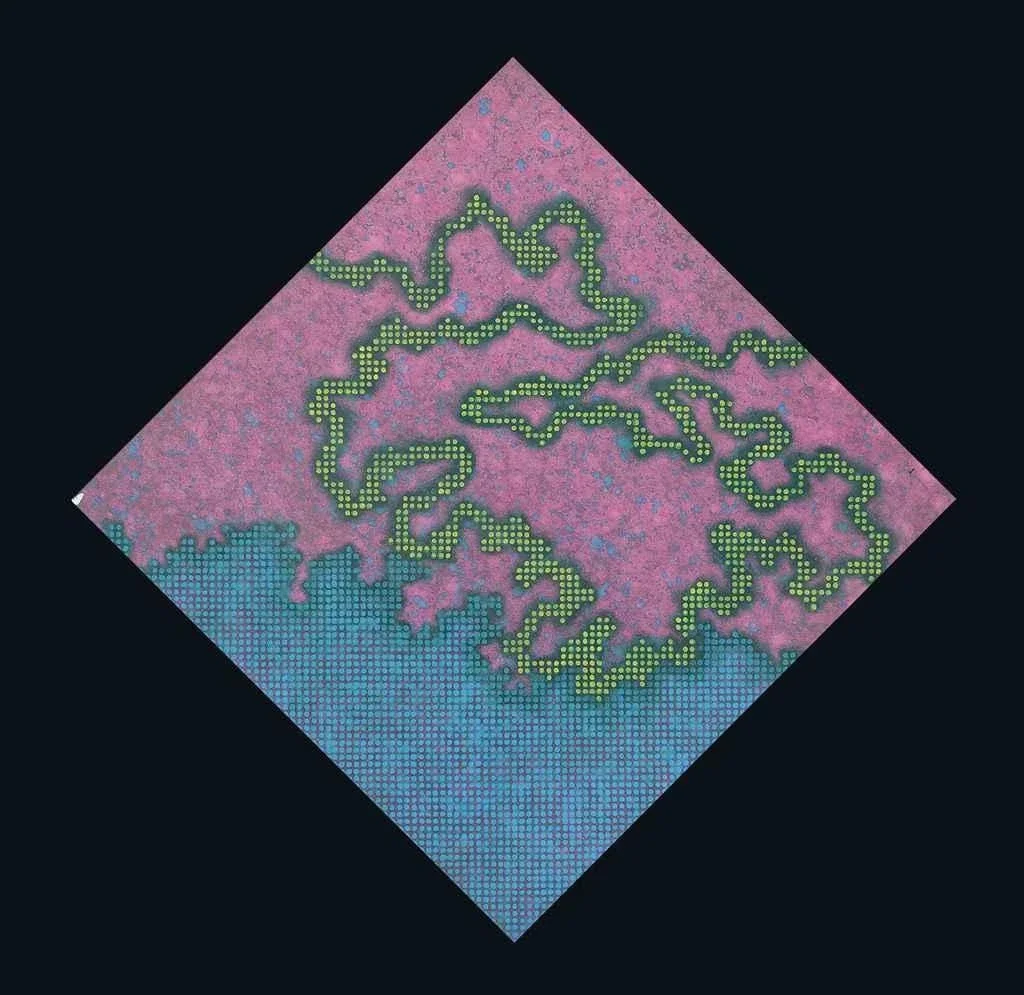A Sharp Blade of Progress
Image: City of Edmonton Archives
In 1965, Edmonton's Metropolitan Edmonton Transportation Study (METS) proposed a six-lane freeway through MacKinnon Ravine. The METS plan would have destroyed a big chunk of pristine, forested river valley. Episode 58 of the podcast Let's Find Out - The MacKinnon Ravine Mystery tells the story of women who challenged this vision of progress.
The most delightful thing, to me, that the researchers found buried in the archives was a doodle.
Woodland creatures discussing what had happened to them as a result of the proposed freeway through their home. One of the women had drawn animals trying to make sense of their future. Bears and squirrels and birds working through the logistics of survival in a concrete ravine. I can't think of a more serious and silly piece of impromptu speculative futures work!
My grandmother, Marie, appears in a 1965 Edmonton Journal photograph from this story, holding a protest sign with other women who had just walked down onto the freeway roadbed to stop the machines. Her group was the Save Our Parks Association, and her voice cuts through the archives with remarkable clarity. "They (the city) are out of their minds doing this," she said. "It's the old colonial spirit, just exploit for material convenience with no regard for what comes afterward."
Their group understood that true progress might mean choosing not to build. They had even contacted Robert Moses, the legendary master builder who had transformed New York with bridges and highways, not to ask how to build, but how to stop building. Even Moses might have wisdom about what not to do.
My grandmother had studied philosophy and philology at Jagiellonian University. My grandfather was an engineer and forester who had run Tatra National Park. Another woman in the group, Margaret Chappelle, was an accomplished artist who served as president of the Federation of Canadian Artists, with work displayed at the Smithsonian Institution. Yet the press consistently diminished them as housewives whose environmental concerns were somehow less legitimate than engineers' traffic calculations.
"Our city fathers think this ravine is a dump. It is not. The city of the future will be a place with space for people. Has the city no foresight? Our future generations will need parklands more than we do," my grandmother is quoted as saying. The dismissive coverage missed what these women were doing. They possessed expertise, but more importantly, they were asking questions about what we were building towards.
It took eighteen years, but they won. In December 1983, city council dismissed the river valley policy that allowed major roadways through the valley. Progress, it turned out, sometimes cuts in the opposite direction from what planners expect.
Speculations that included human-invented animal voices offered ideas that were different from way the technical studies, focused purely on traffic flow.
The worried woodland creatures sketch points toward systematic approaches researchers are developing today. The US Forest Service has published work on Multispecies Storytelling in Forests of Dense Settlement that explores how different species might experience and respond to environmental change. I am not affiliated with this research, but it examines how storytelling can help us understand landscapes from multiple perspectives simultaneously, much like those Edmonton protesters imagining animal conversations about freeway construction.
Houston Foresight has explored interspecies communication futures through research on AI-enabled animal communication. The More-than-Human Futures Research Group at Queensland University of Technology develops multispecies speculative design approaches. The RSPCA's Animal Futures Project created five scenarios examining different futures for animals to 2050.
Other resources include the Interspecies Future Initiative through LAS Art Foundation exploring new rights for nonhuman life, and the Multispecies Lab at The New School imagining different ways for more-than-human life. (My other essay Kohoutek touches on dolphin and human futures, leading to bigger and weirder questions about whose voices are included when we try to design tomorrow.)
Worldview shapes how we imagine tomorrow. The engineers saw traffic problems requiring highway solutions. The women saw living systems requiring protection, generating entirely different preferred futures. Building from this notion of worldview, the question becomes one of legitimacy: who do we see as legitimately able to imagine consequences and advocate for alternatives, and whose voice do we feel we can legitimately exclude? Interestingly, the podcast touches on the hangover of the McCarthy era and self-censorship, or self-exclusion for protection, which adds another dimension.
The drawing of woodland creatures asking questions is more sophisticated than it seems. Picture people gathered around a table, sketching conversations between animals about a highway that didn't yet exist. They were running scenarios. Alternative futures are inevitably going to be shaped by who gets to participate in the conversation. The exercise was simple but also strategic: applied foresight both radical and practical.
October 5, 2025—
References
Binlot, Ann. 'The Woman Who Saved Old New York', BBC Culture, 9 May 2017, https://www.bbc.com/culture/article/20170509-the-woman-who-saved-old-new-york, accessed 26 September 2025.
Chappelle, Margaret. 'Margaret Chappelle: The Artist Who Saved the MacKinnon Ravine', City Museum Edmonton, 2 November 2021, https://citymuseumedmonton.ca/2021/11/02/margaret-chappelle-the-artist-who-saved-the-mackinnon-ravine/, accessed 26 September 2025.
Front Image
Harold Cohen - Landscape Remembered. 1966
More notes




